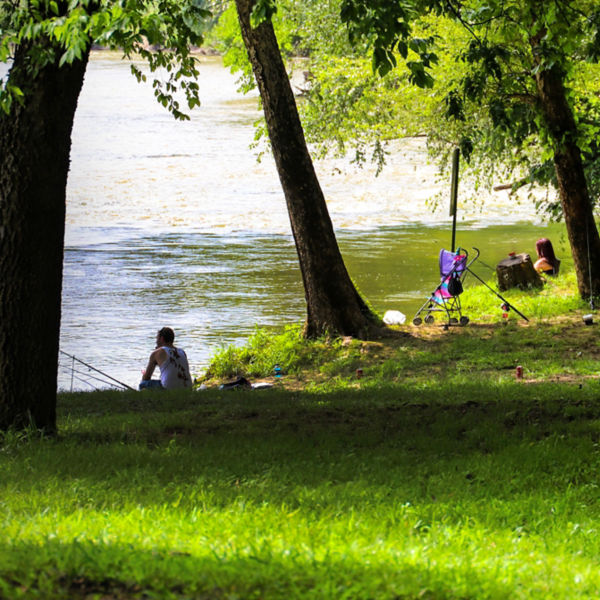
In 1996, when the Summer Olympics came to Atlanta, one competitive outdoor venue gained lasting international acclaim: the Ocoee River. Nestled in Tennessee’s southern Appalachian Mountains less than two hours north of Atlanta, the Ocoee played host to the Games’ canoe and kayak slalom events. And it still serves up some of the Southeast’s best whitewater paddling, whether you’re running it privately (and have the necessary skills and equipment) or are rafting it with a local outfitter.
The Ocoee’s headwaters descend from the mountains of North Georgia into southeastern Tennessee through the Ocoee Gorge and into Lake Ocoee. While the river is controlled by three dams operated by the Tennessee Valley Authority (TVA), the energy concern agreed to a groundbreaking series of regular recreational water releases for paddlers, ensuring the river can be enjoyed by all. River excursions are usually split into two half-day trips, or a full-day trip combining the Upper and Middle Ocoee.
A Storied Past
It wasn’t always open for use. The Ocoee was dammed to build hydroelectric plants between 1910 and 1913, diverting water away from the riverbed. In 1939, the TVA purchased the power system, and then shut down its wooden flume, which diverted water from the Middle section, for repair in 1976. The river ran free, luring private paddlers and commercial rafting companies in droves to its 5 miles of continuous Class III whitewater. Thanks to a congressional act, TVA later agreed to schedule 116 days of recreational whitewater releases per year on the Middle, helping it become one of the most popular whitewater rivers in the world, attracting over 250,000 visitors annually.
The Ocoee kept making history as the first natural river used for Olympic whitewater competition, with course designers rechanneling the riverbed to create a course one-third its natural width. Relying on massive, locally quarried sandstone boulders, the accelerated project took two years to complete and in July 1996, the retooled Upper Ocoee brought nearly 20,000 spectators, competitors, and staff to its tightened banks.
Riverside Amenities
The Ocoee Whitewater Center had an exhibit chronicling the course’s creation and the Ocoee’s role in the ’96 Games, though it was unfortunately destroyed in an April 2022 fire and is now being rebuilt. The parking lot is still open, however, and the site also includes hiking and biking trails that are open year-round, ready for you to stretch your legs after paddling the river. In all, there are more than 30 miles of trails for hikers and mountain bikers, including the looped Bear Paw and Chestnut Mountain trails, and the Thunder Rock Express. The Old Copper Road Historic Trail also allows hikers and bikers an easy-paced alternative.
Want to paddle flatwater? Parksville Lake, also known as Lake Ocoee, is just downstream of the whitewater section. It’s the oldest lake in the Cherokee National Forest, created by Tennessee Rural Electric Company in 1910. And at 1,930 acres, it’s got plenty of room for exploring. Take in the lake at stunning vistas on the Ocoee Scenic Byway (the Forest Service’s original National Scenic Byway), which traces 26 miles of the Ocoee through the river gorge to the lake shoreline. Along the lake, there are two public boat launches (open year-round) off U.S. Route 64, and you can swim and picnic at Mac Point and Parksville Beach. Just below the TVA Hydro Plant dam is Sugarloaf Mountain Park, where you can also picnic and view a scale model of the Olympic canoe and kayak course. Visit Ocoee Inn Rafting for kayak and SUP rentals.

































